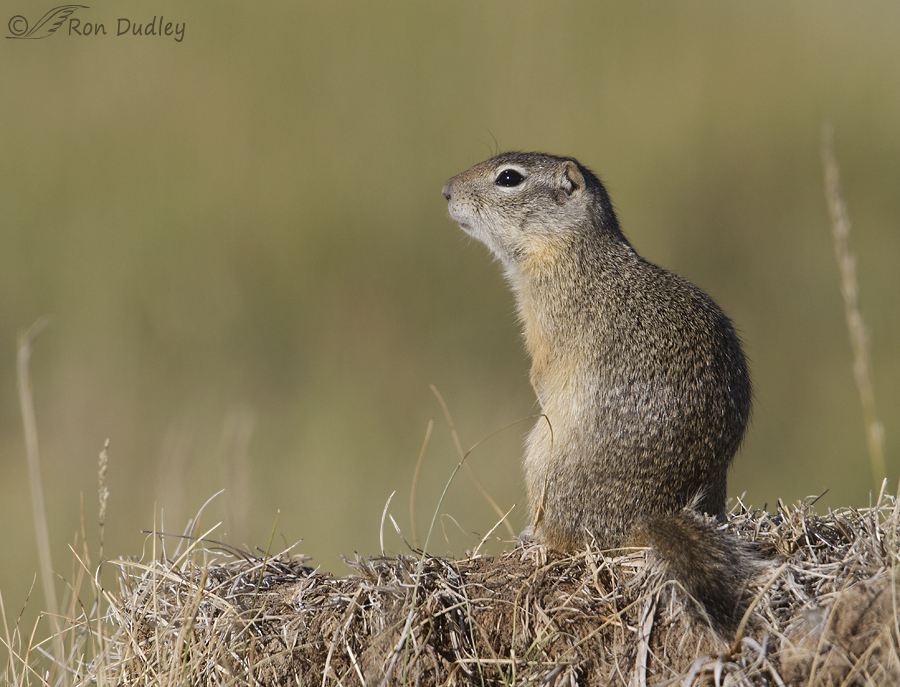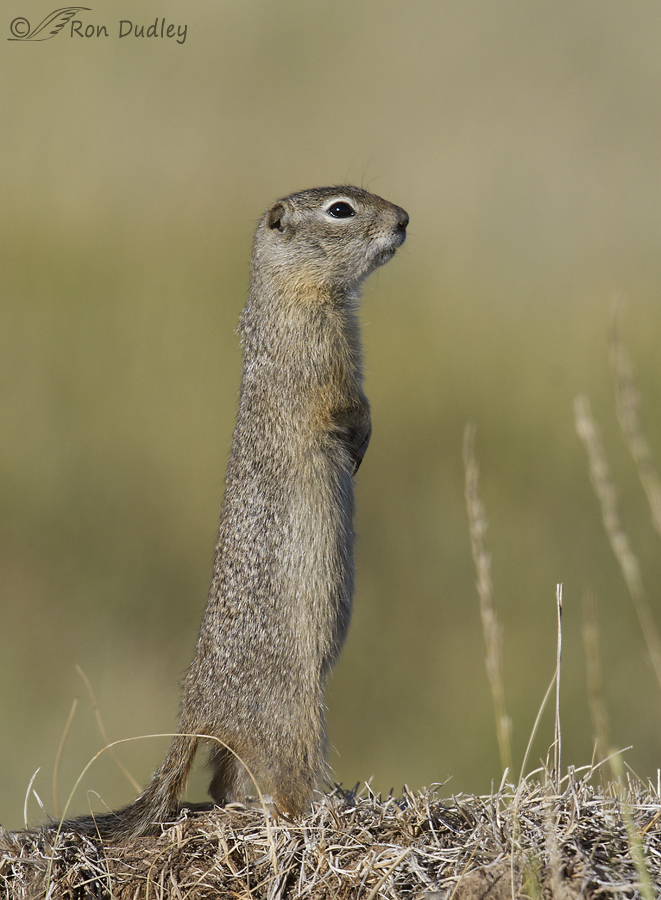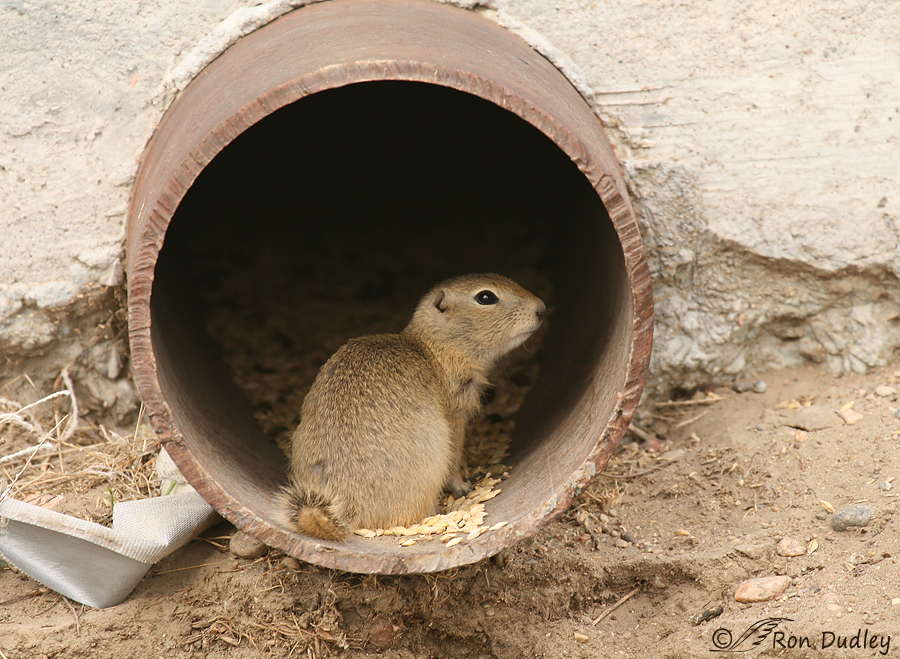In much of their western habitat ground squirrels are a vital link in the food chain. Carnivores love them but ranchers and farmers have a decidedly different view. There are many species and almost as many common names for them but most simply call them gophers, though that name is more accurately applied to the pocket gophers.

1/2500, f/7.1, ISO 500, Canon 7D, Canon EF500mm f/4L IS II USM +1.4tc
The Uinta Ground Squirrel is ubiquitous in parts of Idaho, Wyoming, Utah and Montana (here in northern Utah many call them potguts) but I most often encounter them in the Centennial Valley of southwest Montana where they seem to be everywhere. In fact, they’re indirectly part of the reason I spend so much time in the area as I love to photograph the birds of prey in the valley and these rodents are a significant part of their diet. I photographed this one in that area exactly a month ago.

1/2000, f/8, ISO 500, Canon 7D, Canon EF500mm f/4L IS II USM +1.4tc
I enjoy ground squirrels for a variety of other reasons – they’re gregarious, playful and just plain interesting to watch. This stretched-out vertical pose is typical for them as they try to peer over the grasses near their burrows.

1/250, f/6.3, ISO 400, Canon Rebel XTi, Canon EF100-400mm f/4.5-5.6L IS USM @ 400 mm
But ranchers and farmers don’t much appreciate “gophers” for a variety of reasons. There can be hundreds of them in just an acre or two and they often do a tremendous amount of crop damage, especially to emerging young shoots of wheat and barley. Their burrows and dirt mounds are hard on expensive farm equipment and can be damaging to buildings they burrow under. Their burrows also cause leg injuries to livestock. It can be very difficult to keep them out of stored grain which they contaminate with their droppings. I photographed this Richardson’s Ground Squirrel on our Montana family farm several years ago as it was feeding on barley in an auger tube coming out of a granary.
So the relationship of farmers, ranchers and ground squirrels is a contentious one that often results in “gopher control”. As a kid growing up on the farm in the 50’s and 60’s one of my “jobs” was to shoot gophers and I’ll admit that I did it with enthusiasm (there was a 1 cent per tail bounty…). If I had stayed on the farm (something that almost happened) I’d probably still be shooting them or controlling them in some other manner. Doing so is hard for me to imagine today but we’re all a product of our upbringing and environment to some degree and if they threatened my farm and my livelihood… well, you get the picture.

Lima, Montana is adjacent to the Centennial Valley (and very close to where the first two images in this post were taken). For the past 20 years Lima has sponsored an annual “gopher fest” – a contest with prizes for those who can shoot the most gophers (I took this photo near the main intersection of town on May 29th of this year). Winners are determined by a “tail count”. The purpose of the contest is two-fold – to raise money for maintenance of the town swimming pool and to control gopher populations. More on the contest can be found here if you’re interested.
- Side note: On one of our earlier trips to the area while Mia and I were cruising the back roads looking for raptors to photograph a friendly farmer pulled up next to my pickup to chat. I suspect his initial motivation was to check us out (we do look suspiciously like poachers with Mia riding in the back seat of my pickup with our windows down so we can both photograph out the same side of the vehicle). Almost his first words to us were “are you shooting gophers?”. It turns out that this fellow is the mayor of Lima and over the years he’s become a friend. We look forward to seeing him every trip.
While I believe that farmers and ranchers should have some rights to protect their own property and livelihood from excessive gopher damage I also believe there should be limits. It’s my personal opinion that:
- gopher control should only be practiced on private property. Public lands (BLM, Forest Service, parks, refuges etc) should be excluded
- poisons should be avoided whenever possible and strictly prohibited when it’s possible that those poisons might be consumed by carnivores (raptors in particular but others too) eating gopher carcasses
- contests like Lima’s gopher fest leave a decidedly bad taste in my mouth – they’re much too reminiscent of coyote and other predator killing contests that I despise
Opinions on this issue will likely vary considerably and be fervently held and I have no problem with others expressing opposing views on this forum (in a civil manner of course) if they wish.
Ron


I’ve gotten a lot of enjoyment out of watching Uinta Ground Squirrels in Yellowstone National Park. They really are a lot of fun. I agree with you that these creatures can be controlled on private property by the property owners, and that they should be allowed to thrive on public lands. I think that people who choose to control them via poison really haven’t thought through the consequences of their actions. I wish more people would give thought to the consequences of poison before using it.
I am on the east coast and the squirrels here.have long bushy tails. I love watching them and I feed them peanuts everyday . I wonder if the farmers that have gophers considered putting up Barn Owl boxes? Gophers are one of their favorite prey.
Debbie, there’d have to be a heck of a lot of owls around to even put a dent in the gopher population in some areas. Example – on our family farm there’s been a pair of Great Horned Owls nesting in the granaries for almost 20 years. That pair, feeding gophers almost exclusively to at least two hungry chicks, doesn’t even noticeably reduce the number of gophers around the house and outbuildings, much less the almost 3000 additional acres of the farm. When these ground squirrels encounter monoculture that appeals to them their population density can be amazing.
I have always loved Ground Squirrels. Love your pictures. A lot of the Ground Squirrels have lost their homes here in the high desert, due to growth. It throws everything off. Coyotes start scouting around homes looking for food. I also like your rules. I wish more of man kind were as thoughtful and intelligent like you are Ron!
Thank you, Jean. I’ve seen some of the conflicts between coyotes and homeowners in areas like yours. Can’t blame the coyotes, IMO.
You can’t blame the coyotes or the mountain lions. I lived for years in an area of southern California where the expansion of human habitat meant the destruction of wildlife habitat. One could always see the coyotes coming down the street on trash morning, ready to find anything to eat that they could from the trash cans. I’ve also heard lots of stories about people being upset when they have pushed the coyotes and mountain lions out of their territories and then complaining when their children get injured or killed. I feel badly that the children have to suffer, but it’s time that humankind realizes that ALL creatures deserve to be able to live out their lives in a reasonable way. And that effects have causes. These things don’t happen in a vacuum.
If I was a farmer and the gophers were destroying my crops whether for feed or harvest I don’t have a problem with controlling them. We’re not the only ones that need to eat and I agree with you Ron, on public lands there shouldn’t be any control so the raptors can have lunch and dinner or breakfast too.
We have Woodchucks here in the east and if they find your garden they will absolutely destroy most, not all, but most everything in it. I had to deal with a particular Woodchuck that destroyed 2/3 of our pea patch, but made sure I got some close pictures before doing him in!
Man is or at least thinks he is, and has the tools to be quite persuasive, that he is the dominant predator. Because of this attitude he/she thinks he/she can do anything they want. Not a good thing! From my experience even the dominant predator should be controlled otherwise he/she will eliminate anything and everything that represents competition whether that competition is direct or indirect. Then where would we be?
Agreed, Dick – private lands and our own yards are one thing – public lands quite another. That’s one reason that I fervently hope that efforts in some political circles to privatize public lands fails miserably. Not many things make me angrier than that delusional and selfish concept.
I love your gopher control rules.
Over the years we have expended time and effort and rather a lot of money on rabbit control here – for very similar reasons to your gopher control. And some of the methods we have used don’t sit at all comfortably with me. Introducing disease is one of them. Fatal disease, which leads to a slow and agonising death.
And I am never happy with hunters cruising up and down, well lubricated with beer, taking pot-shots at everything which moves, and some things which don’t. I think most road signs in the country are bullet-scarred.
I’ve heard about the awful problem you’ve had in Australia with introduced rabbits, Elephant’s Child. Introducing disease seems like an extreme way of dealing with it that could have many unfortunate consequences. Most of our rural road signs are riddled with bullet holes and shotgun pellets too.
We see ground squirrels only occasionally down here in northern Arkansas. I suppose all our rocks are not compatible with their tunneling. We can enjoy their cuteness with no concern for their nuisance aspect.
Interesting that you don’t have many of them in your area, Marvin. That has me curious so I think I’ll research some range maps and see how far east they go.
I may be suffering from common name confusion, Ron. The little critters I’ve seen here in the Ozarks are actually Eastern Chipmunks. We also call them ground squirrels, but that may be incorrect. Is a chipmunk just a type of ground squirrel?
Technically chipmunks are ground squirrels , Marvin but in common usage the term is used only for the medium sized ground squirrels like Richardson’s and Uinta Ground Squirrels. The larger ground squirrels are called marmots or prairie dogs and the smaller ones chipmunks.
I think your proposed limits make a lot of sense. And especially any measures needed to protect raptors and other carnivores.
Thanks, Justine. It’s what makes the best practical sense to me…
thanks for your editorial comments – now taking on a bigger elephant – use of lead ammunition in Utah – a free box of lead free is a very small bandaid … and lots of emotional unscientific words from gun owners on this one….
Yes, the issue of lead-free ammo has become a huge Pandora’s box, Barb. And that’s too bad – just look at how a small change has made a significant positive difference for California Condors already.
Funny how often beer and guns go together…….
You’re right, Patty – it’s a relationship that is far too common.